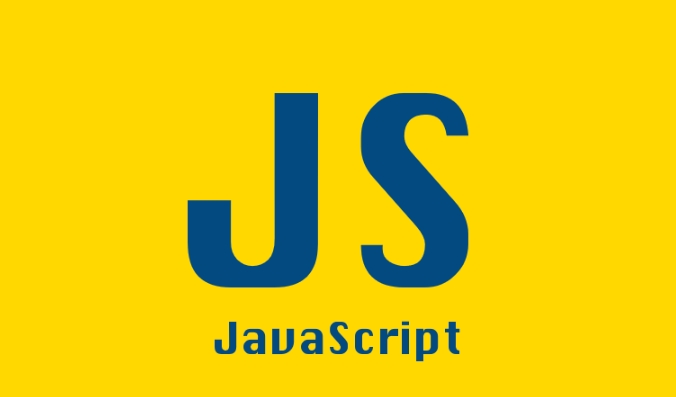The combination of Turborepo and pnpm is the preferred solution for modern JavaScript and TypeScript monolithic warehouses, because it provides fast installation, reliable dependency resolution, shared cache, parallel task execution and excellent tool support; first initialize the project and create pnpm-workspace.yaml to define the workspace structure, then install Turborepo as development dependencies, then configure turbo.json to define the build pipeline, then set up an independent package.json for each package and use pnpm's workspace protocol to reference the local package, and finally use pnpm to access pnpm's workspace protocol. The turbo command runs the build, test and development tasks. It is also recommended to enable pnpm's public-hoist-pattern to avoid the problem of the tool module being unable to find it, configure Turborepo remote cache to improve team collaboration efficiency, use pnpm's patch: protocol security management depends on patch, avoid mixing package managers, simplify scripts, use --filter filtering tasks reasonably, and exclude node_modules, dist, build and .turbo files in .gitignore, thereby achieving an efficient and extensible monolithic warehouse architecture.

Building monorepos with Turborepo and pnpm has become a go-to setup for modern JavaScript and TypeScript projects—especially when you're working across multiple packages or apps and want fast, efficient builds and dependency management. Here's how this combo works well together and how to set it up effectively.

Why Turborepo pnpm?
Turborepo is a high-performance build system optimized for JavaScript and TypeScript monorepos. It caches build results, parallelizes tasks, and leverages dependency graph analysis to avoid unnecessary work.
pnpm is a fast, disk-efficient package manager that uses hard links and symlinks to save space and speed up installs. It also enforces strict dependency resolution, which helps avoid "phantom dependencies"—a big win in monorepos.

Together, they offer:
- Fast installs (thanks to pnpm's efficient node_modules layout)
- Reliable dependency resolution
- Shared caching across packages
- Parallel task execution with intelligent invalidation (Turborepo)
- Excellent TypeScript and modern JS/TS tooling support
Setting Up a Monorepo with Turborepo and pnpm
1. Initialize the project
Start by creating a new directory and setting up pnpm with a pnpm-workspace.yaml file to define your monorepo structure:

mkdir my-monorepo cd my-monorepo pnpm init
Create pnpm-workspace.yaml :
packages: - 'apps/*' - 'packages/*'
This tells pnpm to include all packages under apps/ and packages/ as part of the workspace.
2. Install Turborepo
Install Turborepo as a dev dependency:
pnpm add -D turbo
3. Configure turbo.json
Create a turbo.json at the root:
{
"$schema": "https://turbo.build/schema.json",
"pipeline": {
"build": {
"outputs": ["dist/**", "build/**"],
"dependsOn": ["^build"]
},
"test": {
"dependsOn": ["build"],
"inputs": ["src", "test"]
},
"lint": {
"outputs": []
},
"dev": {
"cache": false
}
}
} This defines common tasks ( build , test , lint , dev ) and their relationships. The dependsOn: ["^build"] means a package's build waits for its dependencies' builds.
4. Set up individual packages
Example structure:
/apps/web /apps/api /packages/ui /packages/utils
Each package has its own package.json . For example, /packages/ui/package.json :
{
"name": "@my-monorepo/ui",
"version": "0.1.0",
"main": "dist/index.js",
"types": "dist/index.d.ts",
"scripts": {
"build": "tsc",
"lint": "eslint src"
},
"dependencies": {
"react": "^18.0.0"
},
"devDependencies": {
"typescript": "^5.0.0"
}
} And /apps/web/package.json can depend on it:
"dependencies": {
"@my-monorepo/ui": "*",
"next": "^13.0.0",
"react": "^18.0.0"
} Because it's a pnpm workspace, you can use * to reference local packages.
5. Run tasks with Turborepo
Now use turbo to run scripts across your monorepo:
# Build all packages pnpm turbo build # Run tests in all packages pnpm turbo test # Start dev servers (eg, Next.js Express) pnpm turbo dev
Turborepo will:
- Run tasks in topological order
- Cache results (local or remote)
- Skip work when inputs haven't changed
Optimize with pnpm and Turborepo Features
Use pnpm's public-hoist-pattern (if needed)
By default, pnpm hoists some packages to node_modules for tools like Jest or ESLint to find them. You can customize this in .npmrc :
public-hoist-pattern[]=*eslint* public-hoist-pattern[]=*jest* public-hoist-pattern[]=*prettier*
This avoids "module not found" errors in tools that expect global-like access.
Enable Turborepo Remote Caching
For teams, set up Turborepo's remote cache :
npx turbo login
Then:
pnpm turbo build --remote-cache
Now CI and team members share cached builds—huge time savings.
Leverage pnpm's patch: protocol for forks
Need to patch a dependency? Use pnpm's patch: feature to apply and track local changes—safe and version-controlled.
Common Pitfalls & Tips
Always use
pnpmwith Turborepo : Mixing package managers breaks symlinks and caching.Keep
package.jsonscripts simple : Let Turborepo orchestrate; scripts should just call tools (eg,tsc,next dev).Use
--filterto run tasks on specific packages :pnpm turbo build --filter web
Don't forget
.gitignore:node_modules dist build .turbo
Final Thoughts
Turborepo and pnpm complement each other beautifully: pnpm handles dependencies efficiently and safely, while Turborepo orchestrates fast, cached task execution. This combo is lightweight, scalable, and ideal for teams building multiple apps and shared libraries.
Set it up once, and you get fast local dev, optimized CI/CD, and a clean, maintainedable structure.
Basically, if you're building a JS/TS monorepo today, this stack is one of the best choices out there.
The above is the detailed content of Building Monorepos with Turborepo and pnpm. For more information, please follow other related articles on the PHP Chinese website!

Hot AI Tools

Undress AI Tool
Undress images for free

Undresser.AI Undress
AI-powered app for creating realistic nude photos

AI Clothes Remover
Online AI tool for removing clothes from photos.

Clothoff.io
AI clothes remover

Video Face Swap
Swap faces in any video effortlessly with our completely free AI face swap tool!

Hot Article

Hot Tools

Notepad++7.3.1
Easy-to-use and free code editor

SublimeText3 Chinese version
Chinese version, very easy to use

Zend Studio 13.0.1
Powerful PHP integrated development environment

Dreamweaver CS6
Visual web development tools

SublimeText3 Mac version
God-level code editing software (SublimeText3)

Hot Topics
 Why should you place tags at the bottom of the ?
Jul 02, 2025 am 01:22 AM
Why should you place tags at the bottom of the ?
Jul 02, 2025 am 01:22 AM
PlacingtagsatthebottomofablogpostorwebpageservespracticalpurposesforSEO,userexperience,anddesign.1.IthelpswithSEObyallowingsearchenginestoaccesskeyword-relevanttagswithoutclutteringthemaincontent.2.Itimprovesuserexperiencebykeepingthefocusonthearticl
 What is event bubbling and capturing in the DOM?
Jul 02, 2025 am 01:19 AM
What is event bubbling and capturing in the DOM?
Jul 02, 2025 am 01:19 AM
Event capture and bubble are two stages of event propagation in DOM. Capture is from the top layer to the target element, and bubble is from the target element to the top layer. 1. Event capture is implemented by setting the useCapture parameter of addEventListener to true; 2. Event bubble is the default behavior, useCapture is set to false or omitted; 3. Event propagation can be used to prevent event propagation; 4. Event bubbling supports event delegation to improve dynamic content processing efficiency; 5. Capture can be used to intercept events in advance, such as logging or error processing. Understanding these two phases helps to accurately control the timing and how JavaScript responds to user operations.
 A definitive JS roundup on JavaScript modules: ES Modules vs CommonJS
Jul 02, 2025 am 01:28 AM
A definitive JS roundup on JavaScript modules: ES Modules vs CommonJS
Jul 02, 2025 am 01:28 AM
The main difference between ES module and CommonJS is the loading method and usage scenario. 1.CommonJS is synchronously loaded, suitable for Node.js server-side environment; 2.ES module is asynchronously loaded, suitable for network environments such as browsers; 3. Syntax, ES module uses import/export and must be located in the top-level scope, while CommonJS uses require/module.exports, which can be called dynamically at runtime; 4.CommonJS is widely used in old versions of Node.js and libraries that rely on it such as Express, while ES modules are suitable for modern front-end frameworks and Node.jsv14; 5. Although it can be mixed, it can easily cause problems.
 How does garbage collection work in JavaScript?
Jul 04, 2025 am 12:42 AM
How does garbage collection work in JavaScript?
Jul 04, 2025 am 12:42 AM
JavaScript's garbage collection mechanism automatically manages memory through a tag-clearing algorithm to reduce the risk of memory leakage. The engine traverses and marks the active object from the root object, and unmarked is treated as garbage and cleared. For example, when the object is no longer referenced (such as setting the variable to null), it will be released in the next round of recycling. Common causes of memory leaks include: ① Uncleared timers or event listeners; ② References to external variables in closures; ③ Global variables continue to hold a large amount of data. The V8 engine optimizes recycling efficiency through strategies such as generational recycling, incremental marking, parallel/concurrent recycling, and reduces the main thread blocking time. During development, unnecessary global references should be avoided and object associations should be promptly decorated to improve performance and stability.
 How to make an HTTP request in Node.js?
Jul 13, 2025 am 02:18 AM
How to make an HTTP request in Node.js?
Jul 13, 2025 am 02:18 AM
There are three common ways to initiate HTTP requests in Node.js: use built-in modules, axios, and node-fetch. 1. Use the built-in http/https module without dependencies, which is suitable for basic scenarios, but requires manual processing of data stitching and error monitoring, such as using https.get() to obtain data or send POST requests through .write(); 2.axios is a third-party library based on Promise. It has concise syntax and powerful functions, supports async/await, automatic JSON conversion, interceptor, etc. It is recommended to simplify asynchronous request operations; 3.node-fetch provides a style similar to browser fetch, based on Promise and simple syntax
 var vs let vs const: a quick JS roundup explainer
Jul 02, 2025 am 01:18 AM
var vs let vs const: a quick JS roundup explainer
Jul 02, 2025 am 01:18 AM
The difference between var, let and const is scope, promotion and repeated declarations. 1.var is the function scope, with variable promotion, allowing repeated declarations; 2.let is the block-level scope, with temporary dead zones, and repeated declarations are not allowed; 3.const is also the block-level scope, and must be assigned immediately, and cannot be reassigned, but the internal value of the reference type can be modified. Use const first, use let when changing variables, and avoid using var.
 JavaScript Data Types: Primitive vs Reference
Jul 13, 2025 am 02:43 AM
JavaScript Data Types: Primitive vs Reference
Jul 13, 2025 am 02:43 AM
JavaScript data types are divided into primitive types and reference types. Primitive types include string, number, boolean, null, undefined, and symbol. The values are immutable and copies are copied when assigning values, so they do not affect each other; reference types such as objects, arrays and functions store memory addresses, and variables pointing to the same object will affect each other. Typeof and instanceof can be used to determine types, but pay attention to the historical issues of typeofnull. Understanding these two types of differences can help write more stable and reliable code.
 How to traverse the DOM tree (e.g., parentNode, children, nextElementSibling)?
Jul 02, 2025 am 12:39 AM
How to traverse the DOM tree (e.g., parentNode, children, nextElementSibling)?
Jul 02, 2025 am 12:39 AM
DOM traversal is the basis of web page element operation. Common methods include: 1. Use parentNode to obtain the parent node, and can be chained to find it upward; 2. children return a collection of child elements, accessing the first or end child elements through the index; 3. nextElementSibling obtains the next sibling element, and combines previousElementSibling to realize the same-level navigation. Practical applications such as dynamically modifying structures, interactive effects, etc., such as clicking the button to highlight the next brother node. After mastering these methods, complex operations can be achieved through combination.






